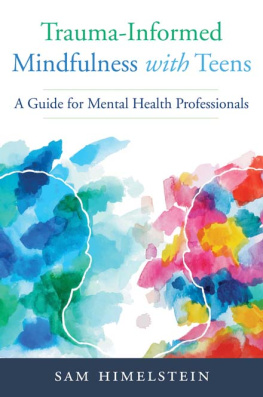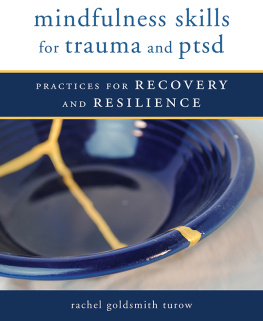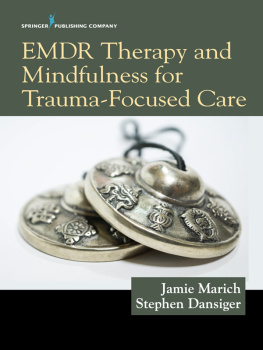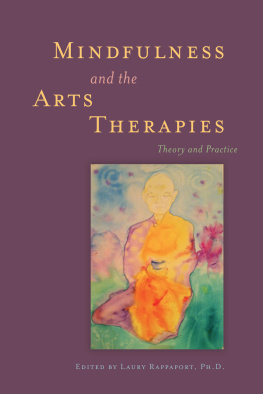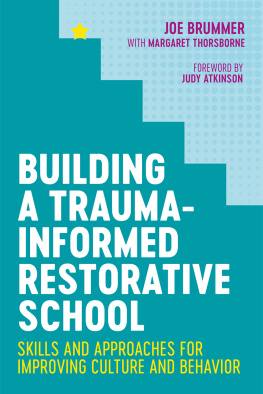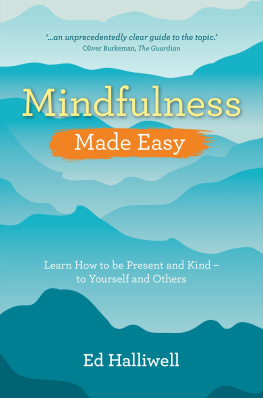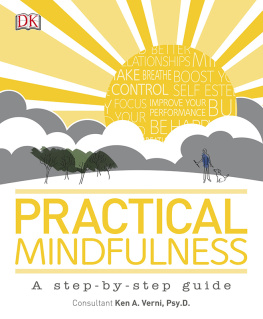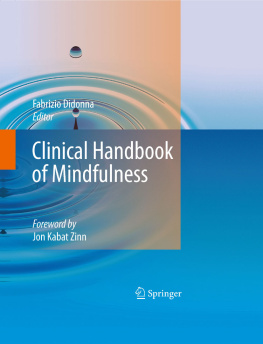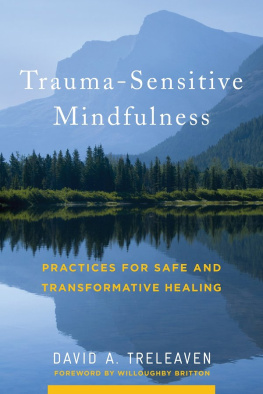
TRAUMA-INFORMED MINDFULNESS WITH TEENS
TRAUMA-INFORMED
MINDFULNESS WITH TEENS

A Guide for Mental Health Professionals


SAM HIMELSTEIN

W.W.NORTON & COMPANY
Independent Publishers since 1923
A NORTON PROFESSIONAL BOOK
I dedicate this book to the loves of my life:
My wife, Alicia, and my sons, Solomon and Malakai.
Every day you make me want to be a better person.
All of the clinical examples in this book are from real interactions with youth Ive worked with over the years. I have altered all identifying information and aspects of their stories to maintain confidentiality.
Get Continuing Education (CE) credit for reading this book! Please visit the Center for Adolescent Studies website at https://centerforadolescentstudies.com to learn more about CE and get more training related to this book and its contents, plus blog posts, free online courses, updates about live events, and community!
I am truly grateful for all of the support I have received for this project. I foremost want to thank all of the young people Ive worked with both in clinical and paraprofessional settings. You have taught me how to do this work with integrity and get positive results beyond what I couldve imagined.
I also thank Deborah Malmud and the editorial staff at Norton for their patience with this manuscript. Life manifested in multiple ways throughout writing this book and I always felt supported.
Finally, I thank my friend and colleague Catharine Hannay of mindfulteachers.org. This could not have happened without your editorial support and passion for this project.
I was 13 years old the first time I witnessed the negative effects of trauma. I found myself incarcerated in the juvenile hall for being a passenger in a stolen vehicle. It was a scary and stressful experience, to say the least. The conditions of the facility were terrible: outdated living units with inadequate security, two youth to a room, and worst of all no bathroom in the cell. Most of the youth I met had been through hell. One youth was shot multiple times and had visible gunshot wounds, another was robbed walking down the street in his neighborhood, another was burned as a warning for stealing a drug dealers drugs, and anothers sister had been murdered.
When I think of those experiences as an adult, I now understand that all those youth were heavily traumatized. To make matters worse, there were barely any mental health services at the time and the staff were poorly trained to deal with trauma. In my unit (the younger boys unit) there were fights two-to-three times per week, and the older high school-aged units had fights every day. I now know as a trained adult that most of the violence, reactionary aggressiveness, fighting, and discontent from the unit came not only from the stress of being incarcerated, but also from the reacting central nervous systems of youth whod been severely traumatized. And I can see how their trauma was reactivated by antagonism from some of the staff.
I was lucky and privileged. I was able to turn my life around with an immense amount of inner work and support from my parents. Ten years after my last detainment in the juvenile hall, I went back as a young adult volunteer. I was volunteering with the Mind Body Awareness (MBA) Project, a program that taught mindfulness and emotional intelligence practices to incarcerated youth. (The organization had not been in existence when I was in the juvenile hall.) The facility itself was different; Alameda County (one of the counties in the San Francisco Bay Area) had recently undergone a large political movement to build a new 300-plus bed, high-tech juvenile hall. It looked like a prison, with electric doors that were opened and closed with a push of a button, two tiers of cells stacked on top of each other, and video cameras watching the youths every move. A number of the staff that worked there when I was detained still worked there 10 years later when I found myself on the other side of the door trying to help incarcerated youth.
I was in my first year of graduate school at the time and had already begun learning about traumatic stress. On that first day back in the juvenile hall I met young people with almost identical histories of violence to the youth I met while a detainee. One youths brother had been killed. Another shot. Another had been homeless. As a very green graduate student volunteer I simply bore witness to their experiences, not exactly knowing how to respond to their stories but feeling a deep sense of compassion for the suffering theyd endured. Luckily, I was cofacilitating with the then-director of the organization, who was more versed in responding skillfully to youth in groups.
I had already been an avid meditator for years, but this was my first experience teaching meditation to anyone else, let alone incarcerated youth. The director attempted to teach the youth a breathing technique. It didnt go over well; they had high amounts of energy and wanted to just talk. Then we just dropped the meditation and started a push-up contest. They were enthusiastic, and we had a great time. We didnt meditate anymore during that class, but we did connect and the class felt valuable.
This is when I began to understand a very important principle that has guided my work with teens to this day: sometimes (most times) it isnt about the technique, but about meeting youth and connecting on a human being level. Connection, trust, and authenticity plant the seeds of safety and ultimately lead to the atmosphere in which youth in a maximum security juvenile hall unit could feel comfortable enough to close their eyes and try meditation. Building trust fosters emotional safety. And as Ill establish in this book, emotional and interpersonal safety are the bedrock of effective trauma-informed care.
Fast forward another 9 or 10 years and Id become a licensed clinical psychologist who worked in the same juvenile hall as a full-time clinician and facilitated trainings around the country about mindfulness, substance abuse treatment, and trauma-informed work with incarcerated youth. My knowledge and expertise in trauma work had grown extensively since my first experience teaching mindfulness. It was clear that youth in the maximum security unit (the unit I worked in) had some of the most extreme trauma histories. These included experiences mentioned above: violence committed against them or a close friend or family member, severe interpersonal abuse and neglect, and also systemic acts of oppression and racism.
Ill never forget one young man I worked with: As he sat in my office, his eyes were wide and almost bulging from his head, face stricken with fear, and with a shaky voice he said, The cop told me, I wish you tried to get out and run. Then I couldve shot and killed you legally. These were the words of the officer that arrested Mike, a 15-year-old youth of color, just a day before we met. Mike had been arrested because he was driving a car without a license and had marijuana in his possession. Once the police attempted to pull him over he drove off, taking them on a city chase. After a number of minutes, he realized it was futile to continue. He pulled over, put his hands on the wheel, and waited to be arrested. Mike was still in shock as he said, It wasnt as much that they beat the fuck out of me when they arrested me, it was what he said, that he couldve killed me legally, that really messed with me.
Next page
